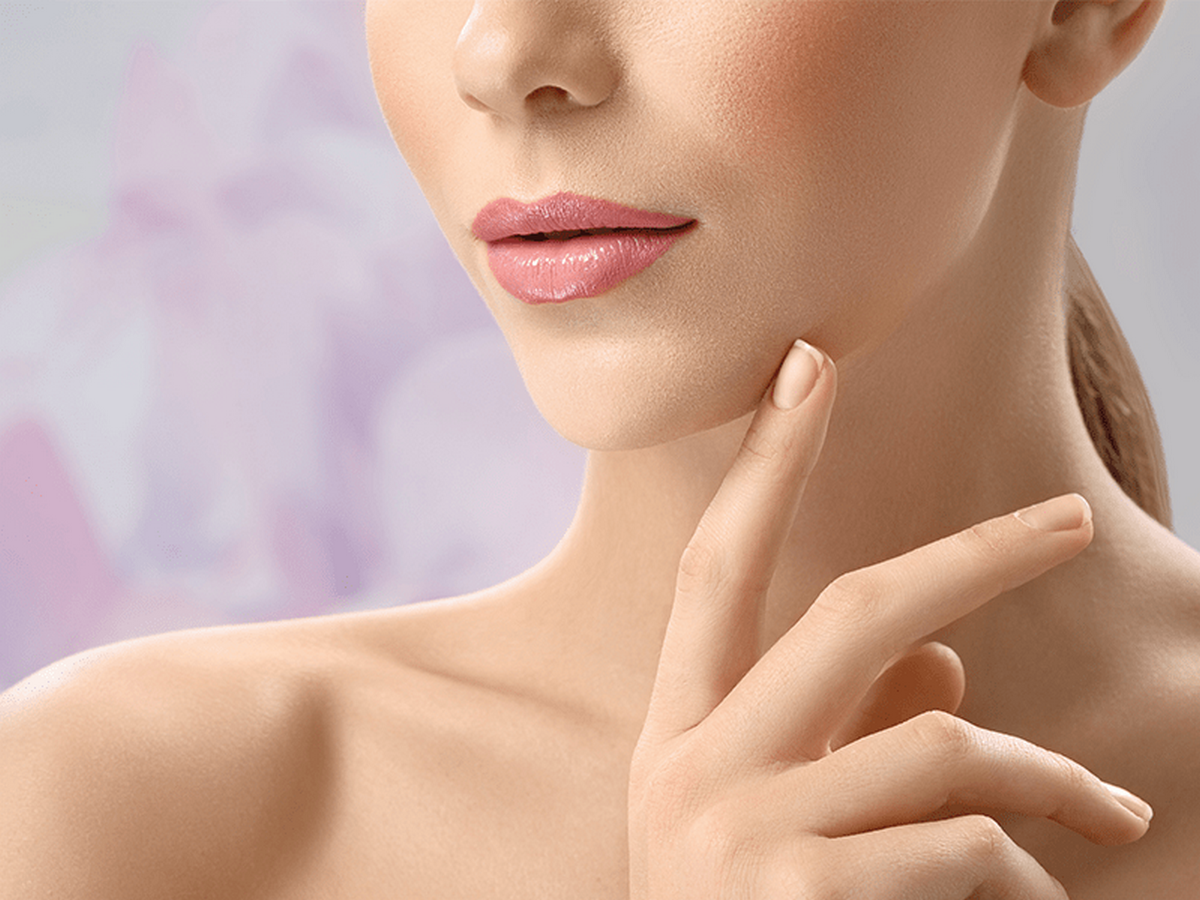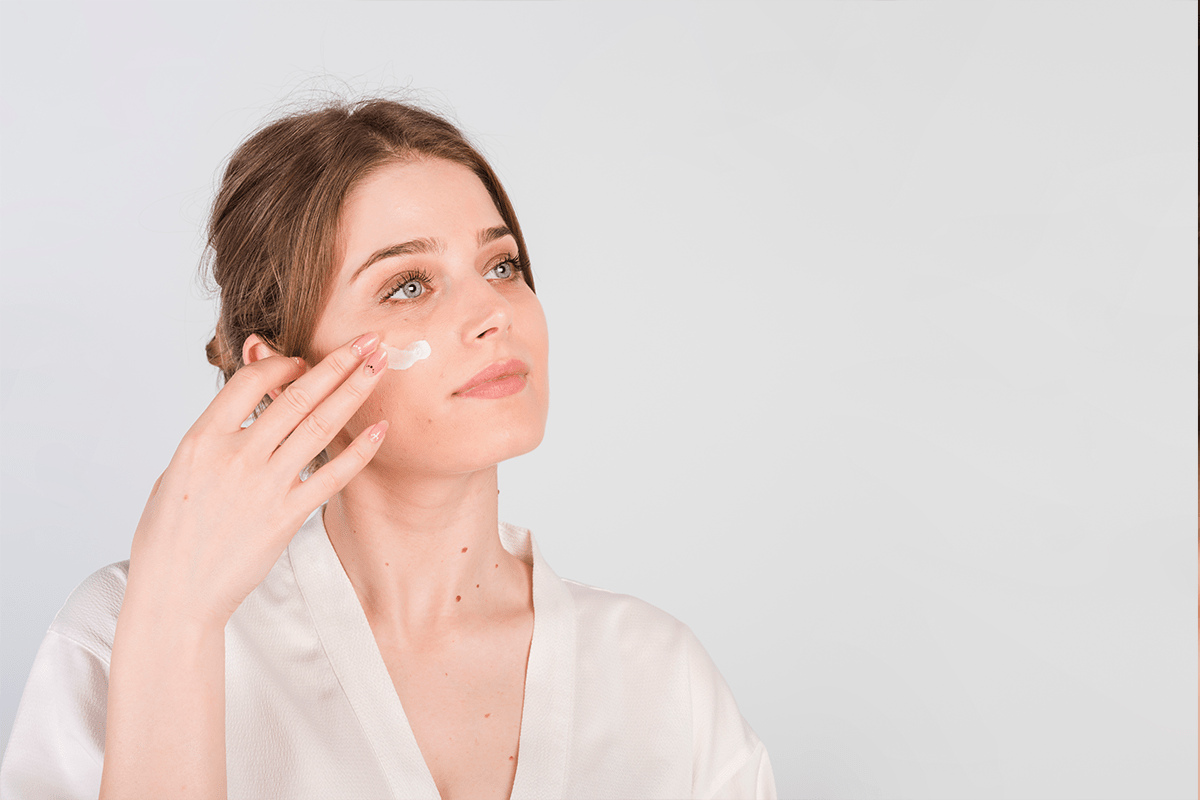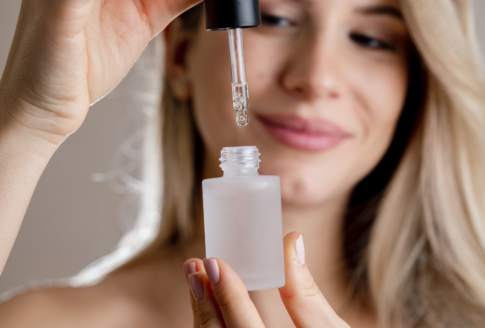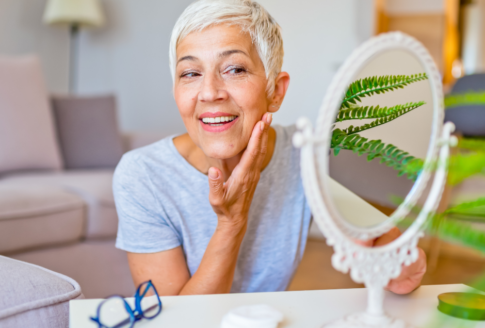Freckles: How do they leave the skin?

Too often, people with freckles and spots are looking for easy and quick ways to deal with them. Their treatment requires patience, however, there is an effective way to both prevent and treat them.
Table of Contents
What are freckles?
Freckles are discolored areas of the skin under the skin. They usually appear on the skin during childhood. People with light skin and red hair are more likely to develop freckles.
Mostly are caused by genetic factors, and can also occur after sun exposure. They appear on the face, neck, chest and arms. It is possible that in winter freckles look more faded, while during the summer they are more intense.
The color of the freckles can be red, dark brown or light brown and their shape can be irregular. Their size is usually 1-2 mm or more.
What are spots?
Spots and discoloration of the skin are caused by disruption of the melanin production process by skin melanocytes. They are color changes due to the uneven production of melanin and can vary in size or color (gray, brown or black).
These are common skin imperfections, which are obtained mainly in people age 50-plus, and usually occur due to frequent sun exposure.
As a result there are skin areas with different pigmentation in comparison to the rest of the body. The most common areas that spots appear are the back, chest, arms and hands. In addition to these areas, they can also appear on the rest of the body.
Why do I have freckles?
Although the causes of freckles are different, there is a common parameter in most of them, that is exposure to sunlight. The main causes are:
- Sun and ultraviolet radiation
- Heredity
- Cosmetic creams
- Acne
- Aging
Sun
Skin exposure to sunlight results in the creation of dark spots due to hyperpigmentation. Freckles created on the skin are a result of the above process, however they differ from the spots as during winter their color naturally fades, whereas this is not happening with sun spots. Also, they appear on all skin types regardless of age.
Acne and freckles
Inflamed blemishes and pimples are particularly sensitive to ultraviolet radiation, resulting in topical discoloration if proper sunscreen is not provided. They usually occur on acne prone skin and are more common in young women.
Hormonal changes
Pregnancy, hormone replacement therapies and birth control pills are periods of intense hormonal change. The combination of these hormones with the sun may create spots on the skin, chloasma or pregnancy mask, although they do not appear in all women.
How do freckles leave the skin?
Natural blemishes on the skin do not need treatment, as they are not a sign of a skin problem. As you age, natural freckles may recede or even decrease.
In other cases, face whitening is often applied, a process that requires patience and time. Usually, the difficulty increases depending on the depth of the spots. Common techniques used to treat discoloration are cryotherapy, chemical peeling, palmitic light, and laser.
In recent years, there is a plethora of whitening creams for freckles that aim to reduce discoloration and whiten the skin. These creams contribute to:
- Reduction of discolorations
- Spot prevention
- Uniform skin
How it works
The whitening agents used in creams are usually aimed at inhibiting the action of an enzyme responsible for the production of melanin (tyrosinase) or the deposition of melanin in keratinocytes.
However, auxiliary various other substances are used, such as acids, which facilitate their action by reducing chromatic lesions.
There are many skin whitening products on the market that specialize in the face or hands and are available in the form of a cream, gel or mask.
What substances should my whitening cream contain?
AHAs
Alpha hydroxy acids (AHAs) are a group of natural acids, derived mainly from fruits, and are especially helpful in cases of skin conditions such as freckles, acne, wrinkles and skin scars. Among the most well-known hydroxy acids are glycolic acid and citric acid.
AHAs provide micro-exfoliation to the skin, removing the top layers of dead cells. For this reason, they especially help to improve the color tone and imperfections of the skin. They can thus correct superficial spots and freckles, while brightening the skin.
Retinol or Retinoids
Retinol, also known as vitamin A, is one of the most well-known anti-aging ingredients for the skin. In addition to wrinkles and fine lines, retinol creams are also recommended by experts for the treatment of freckles.
Among the retinoids used to treat blemishes exceeds retinaldehyde. It is a derivative of vitamin A, which speeds up cellular metabolism, while also helping to discolor the skin.
Its action lies in the renewal of skin cells, thus improving its brightness. In addition, it diffuses pigment molecules on the skin surface, thus helping the spots to appear better.
Read the instructions for use on retinol products that you want to include in your beauty routine, as some of them may only be used at night.
Azelaic acid
It is a substance, which is mainly used in acne treatments, thanks to its antimicrobial action. Normally, it is produced by a species of fungus, Pityrosporum ovale, and has a mild inhibitory effect of the enzyme tyrosinase in melanocytes. It has been used to treat freckles and hyperpigmentation, and is usually applied topically as a gel.
Niacinamide
It is the active form of vitamin B3 and has the property of inhibiting the transfer of melanin to the epidermal keratinocytes. Helps treat hyperpigmentation, reduce the appearance of blemishes as well as whiten the face.
Arbutin
It is naturally found in berries, cranberries and various types of pears. It is a derivative of hydroquinone, however it can also promote skin whitening in a very safe way.
Its action lies in the inhibition of the enzyme of melaninogenesis, without affecting its synthesis. It is mainly used in mild whitening creams for the face and body.
Cohric acid
A substance derived from fungi and inhibits the synthesis of melanin in the skin. The result is that the melanin content in the cells is reduced, improving the hyperpigmentation of the skin.
Tips for prevention & treatment
- Use sunscreen
If you want to help prevent freckles on your skin, make daily use of your sunscreen! Choose a waterproof face sunscreen with a high protection index (at least SPF30) and apply it 15 minutes before sun exposure. Nowadays there is a great variety in anti-spot sunscreens!
Use your sunscreen during winter and summer to protect your skin from extra darkening.
- Visit your dermatologist
If you notice that with your daily treatment routine, the appearance of freckles and freckles does not improve, you can visit a specialist dermatologist.
In addition, if you notice changes in the size, shape, surface or color of your freckles, you should seek medical advice immediately.
- Choose the right time for treatment
It would be good if any treatment for facial freckles is done during a period when there is not much sun exposure. It is not advisable to use whitening cream in the summer, if you want to avoid bad discoloration of the skin.
However, today, there are products and treatments that can be applied at any time of the year. There are even technologies that allow the treatment for freckles in the summer! For this reason we carefully read the instructions for use on creams or consult a specialist.
-
Avoid the waxing method
For areas of your skin that show blemishes, freckles and spots, it is recommended to avoid the waxing method, as it may injure the skin.
Alternatively, you can choose another hair removal method, such as a razor or laser.
Extra Tips
Wear a hat when exposed to the sun
Apply specialized products
Do not forget our sunglasses
Discover at Vita4you.gr a wide variety of products for spots-freckles.
Sources
Disclaimer
The content of this blogspot is not and can not be considered as medical advice, diagnosis or treatment. All information is provided to readers solely for informational purposes. There is no intention to substitute this content for personalized medical advice, diagnosis, prognosis or treatment.







Leave a comment